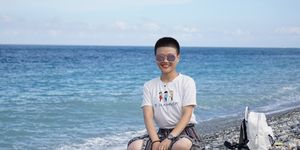Scientists 3D Bioprint Tumor Models and Vasculature
A new material has been discovered that can be used to 3D print structures that resemble vasculature. The biomaterial is created using a protein that can self-assemble when it's exposed to another chemical. The flexible parts of the proteins strongly interact with graphene oxide, when mixed they form an ordered structure. By controlling the manner in which the components are mixed, the assembly of structures can be guided, and used in a 3D printer. In work reported in Nature Communications, the material was used to generate tubular structures that are similar in some ways to vascular tissue.
"This work offers opportunities in biofabrication by enabling simultaneous top-down 3D bioprinting and bottom-up self-assembly of synthetic and biological components in an orderly manner from the nanoscale," said the research leader Professor Alvaro Mata of the University of Nottingham. "Here, we are biofabricating micro-scale capillary-like fluidic structures that are compatible with cells, exhibit physiologically relevant properties, and have the capacity to withstand flow. This could enable the recreation of vasculature in the lab and have implications in the development of safer and more efficient drugs, meaning treatments could potentially reach patients much more quickly."
In another research study reported in Science Advances, investigators used 3D bioprinting to create a model of glioblastomas, aggressive brain tumors that are made of various types of cells and are difficult to treat. The researchers used patient cells in a bioink to print tissue along with vasculature, which enabled the tissue to survive for months.
"There is a need to understand the biology and the complexity of the glioblastoma," said Xavier Intes, a professor of biomedical engineering at Rensselaer Polytechnic Institute. "What's known is that glioblastomas are very complex in terms of their makeup, and this can differ from patient to patient. We developed a new technology that allows us to go deeper than fluorescence microscopy. It allows us to see, first, if the cells are growing, and then, if they respond to the drug."
In another study reported in Nature Communications, scientists at the Advanced Science Research Center at The Graduate Center, CUNY (CUNY ASRC) and Northwestern University have engineered a 4D printer that is able to recapitulate the patterning on the outside of cells. Nanopatterning can now be performed on a surface that has molecules attached. Researchers will be able to create precise and delicate 4D structures with a tailored chemical composition.
"I am often asked if I've used this instrument to print a specific chemical or prepare a particular system," said the primary investigator of the study Adam Braunschweig, a faculty member with the CUNY ASRC Nanoscience Initiative and The Graduate Center and Hunter College Chemistry Departments. "My response is that we've created a new tool for performing organic chemistry on surfaces, and its usage and application are only limited by the imagination of the user and their knowledge of organic chemistry."
Sources: AAAS/Eurekalert! Via University of Nottingham, Wu et al Nature Communications 2020, Rensselaer Polytechnic Institute, Science Advances, Advanced Science Research Center, GC/CUNY, Carbonell et al Nature Communications 2020










